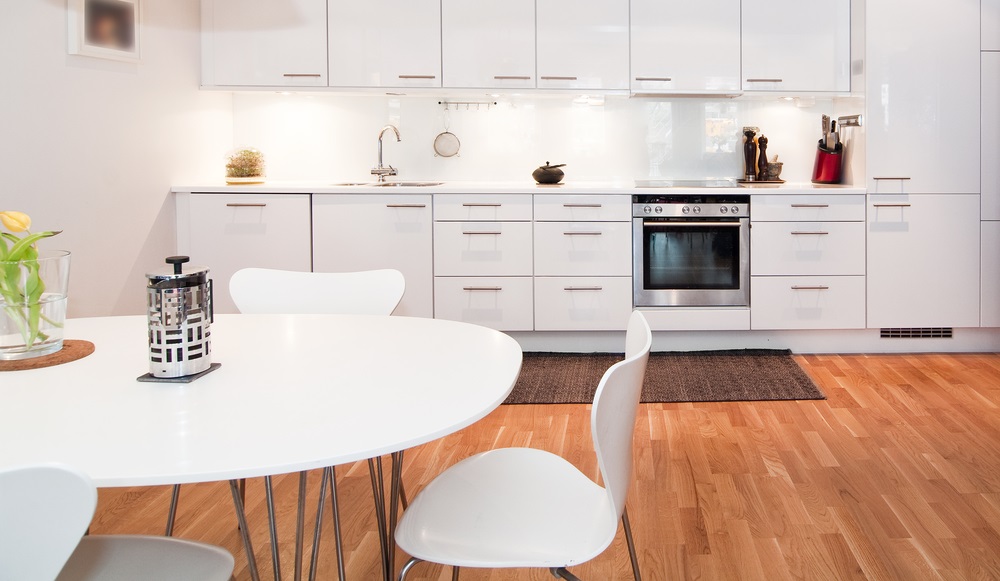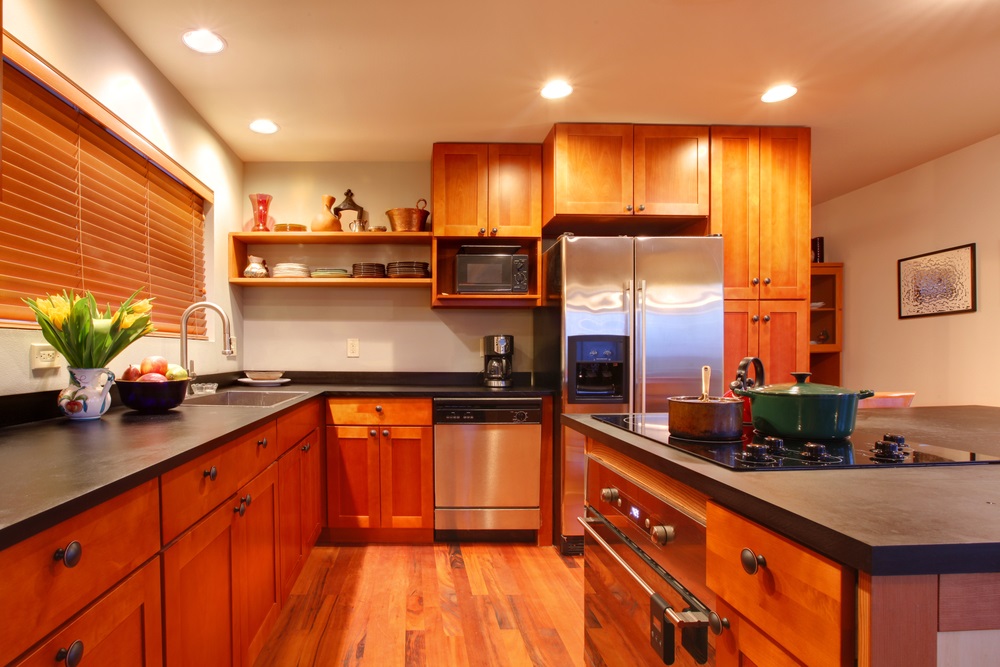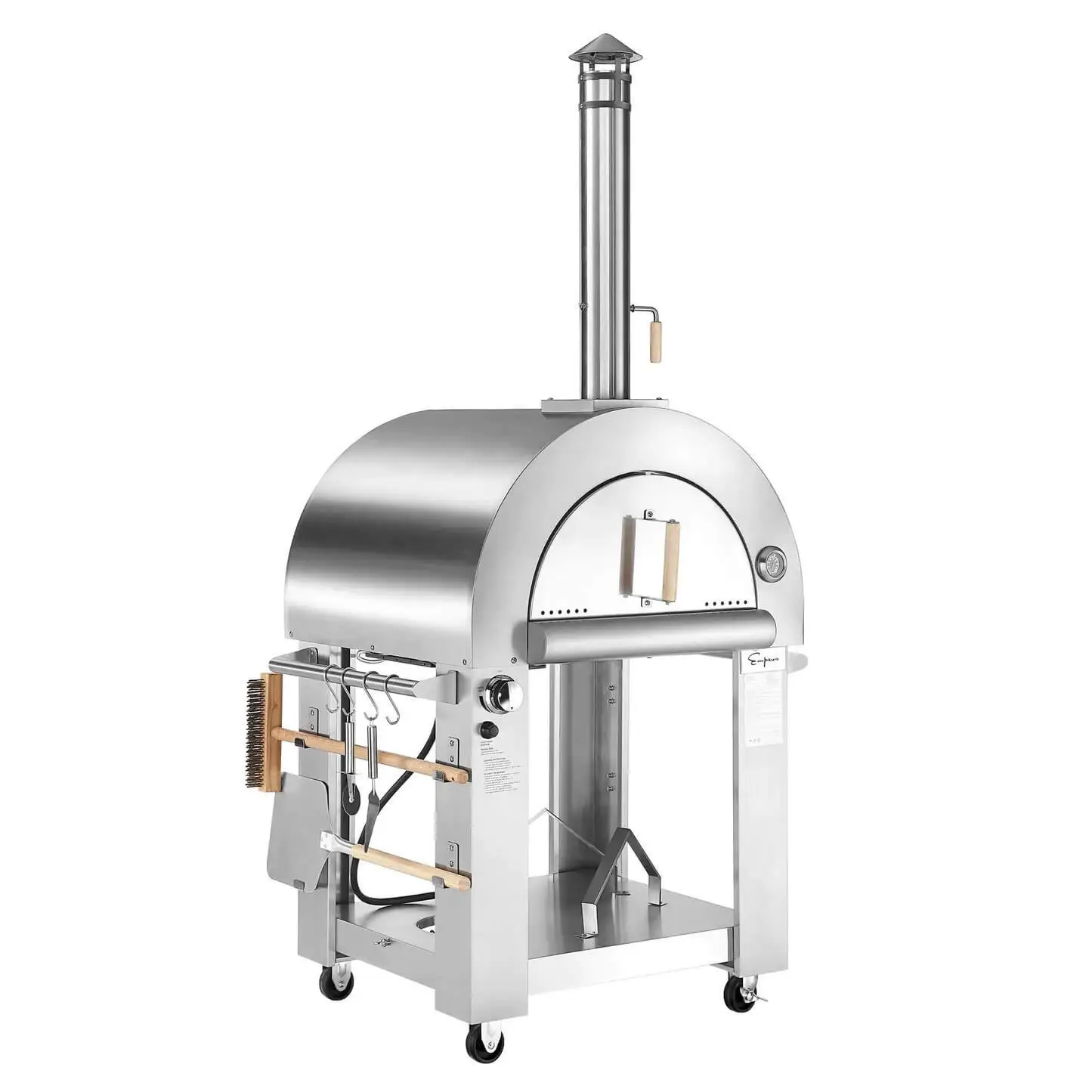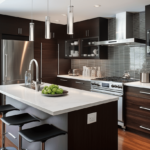Committing to a sustainable lifestyle is a step by step process. Some people start with alterations in their kitchen because it is the most expensive and time-consuming. Their first step? Purchase and use eco-friendly kitchen cabinets.

Switching to green kitchen cabinets is beneficial to the homeowner, as it is on the environment. The earth-friendly materials and finishes provide better indoor quality—reducing you and your family’s exposure to toxic compounds.
Now there are tonnes of choices when you get to your home improvement store. To help you choose, I asked our Brisbane architects over at Superdraft Pty. Ltd. in Australia for some tips and recommendations. Here’s what I got:
Formaldehyde-free cabinets
Say no to cabinets that use plywood, fibreboard, or particleboard as the interior box. These materials are glued and bonded together using urea formaldehyde, a compound that releases a carcinogenic fume.
Non- or low- VOC finish
The first thing to do is ask whether the cabinet has a water-based finish. Water-based building coat and glaze are safe because it emits low volatile organic compounds.

Always check the label of the cabinets before buying them. Healthy cabinet choices have a no-VOC or low-VOC logos or trademarks. If you want, you can ask the distributor for third-party certifications that prove that the cabinets have low chemical emissions. Some of the world’s trustworthy third-party organisations that approve green building products are Green Seal and GreenGuard.
Forest Stewardship Council (FSC) certified wood
The FSC an organisation who ensures that the manufacturer of the kitchen cabinets harvested the wood responsibly from the forest. Before you say yes to beautiful wooden cabinets, look for this or any other similar certification. You’re doing Mother Earth and her forests a huge favour.

Reused or salvaged wood
According to our Superdraft architects, salvaged wood is the most sustainable option. Plus, the cabinets itself carry a rich and unique personality. Reclaimed wood looks great if your style is a bit more warm rustic.
Veneer
Wood veneer is a thin layer of wood attached to the exterior areas of the cabinet. It looks and feels like solid wood, therefore this is a sustainable alternative to wooden cabinets. You can achieve a luxury look for a lower price.
Bamboo
This is one of the renewable building materials that are slowly getting homeowner attention. Bamboo is naturally firmer and stronger than most hardwoods. It’s also flexible and lightweight.

Lyptus
Lyptus is an engineered building product from hybrid eucalyptus plants in Brazil. It looks like mahogany or cherry but with finer grains. Plus, the raw materials used to make lyptus are harvested after 15 years—only a quarter of the time needed in growing hardwoods.
All of these options can be offered to you in a day. Before making your choice, consider the material’s durability. Choose something that can last for years (or decades) even when exposed to heat, steam, or water splashes. The cost of the cabinets might be equivalent or more that your monthly salary, but as long as it’s good for long-term use, it’s worth it. ∎
Follow Superdraft Pty. Ltd. on Facebook.










